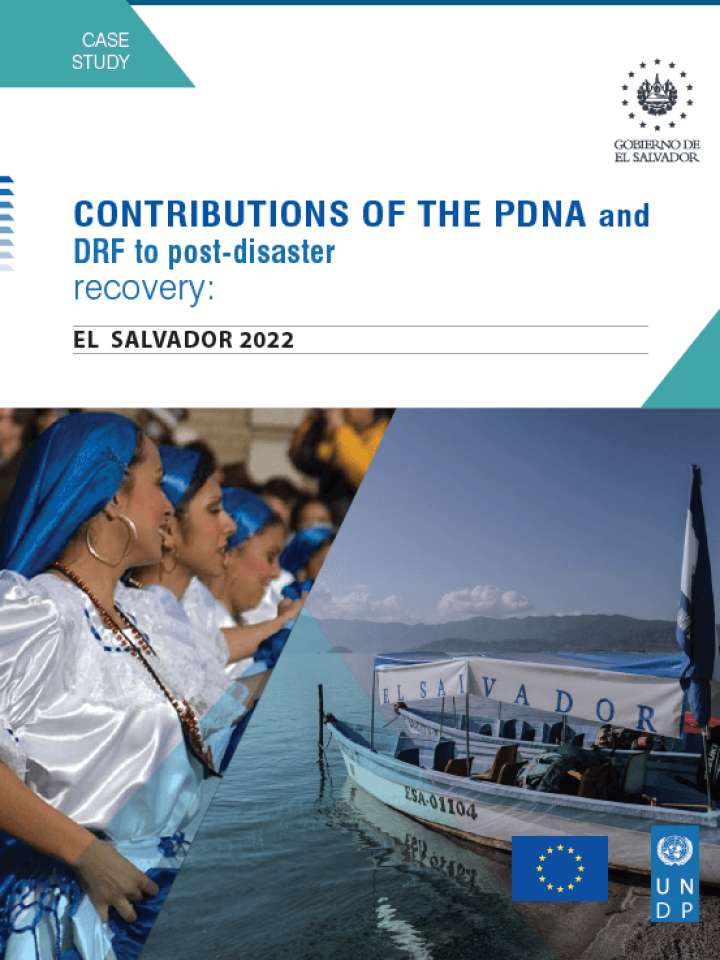Contributions of the PDNA and DRF to post-disaster recovery: El Salvador 2022
Although the Post-Disaster Needs Assessment (PDNA)/Coronavirus Recovery Needs Assessment (CRNA) methodologies and Disaster Recovery Frameworks (DRF) have been widely used and disseminated, few evaluations or lessons learned documents have been produced to assess their actual impact and contributions to recovery in the countries where they have been implemented.
El Salvador, a country with high levels of disaster risk to multiple hazards, faced a complex disaster situation in 2020 due to the combined effects of the Covid-19 pandemic and tropical storms Amanda and Cristobal, which together generated damage and losses estimated at $2.9 billion (March-July 2020), an economic impact estimated at 7.5 per cent of GDP and a significant human impact (UNDP and GoES, 2020). The country then decided to strengthen its preparedness for recovery, a process that included a review of its needs assessment and post-disaster recovery policies and operations. During an initial stage, the international PDNA methodology was used to evaluate the combined effects of tropical storms Amanda and Cristobal in the context of the response to Covid-19 in 2020. Subsequently, the Government of El Salvador (GoES) requested UNDP support for the adaptation of the methodology to specific sectors in order to standardize and institutionalize the evaluation process in the event of a disaster. At the moment, eight adapted sector guidelines have been developed, covering productive(agriculture, livestock, fishing and forestry), social (housing, education and health) and infrastructure (transportation, energy and water and sanitation) sectors. In 2022, the Post-Disaster Recovery Framework (DRF) was adapted based on national and international expertise, the national context and institutional framework, and priorities established by the GoES. The aim is to promote this model in the region using the example of El Salvador.
This case study seeks to analyse and document the contributions of the PDNA and DRF to post-disaster recovery in El Salvador, including its ability to be adapted through the CRNA and other tools to a context marked by multiple hazards, a weak health system and fragility.
